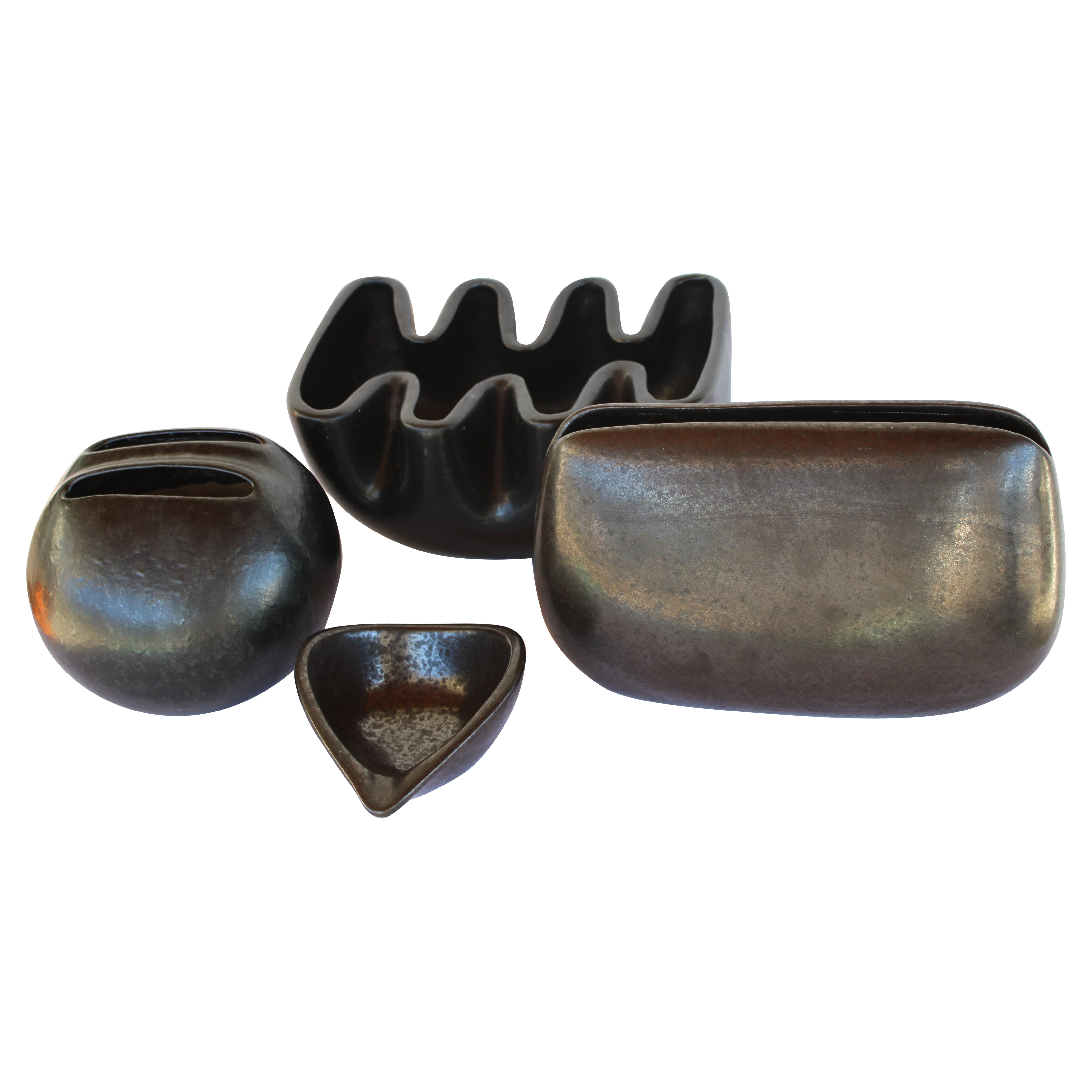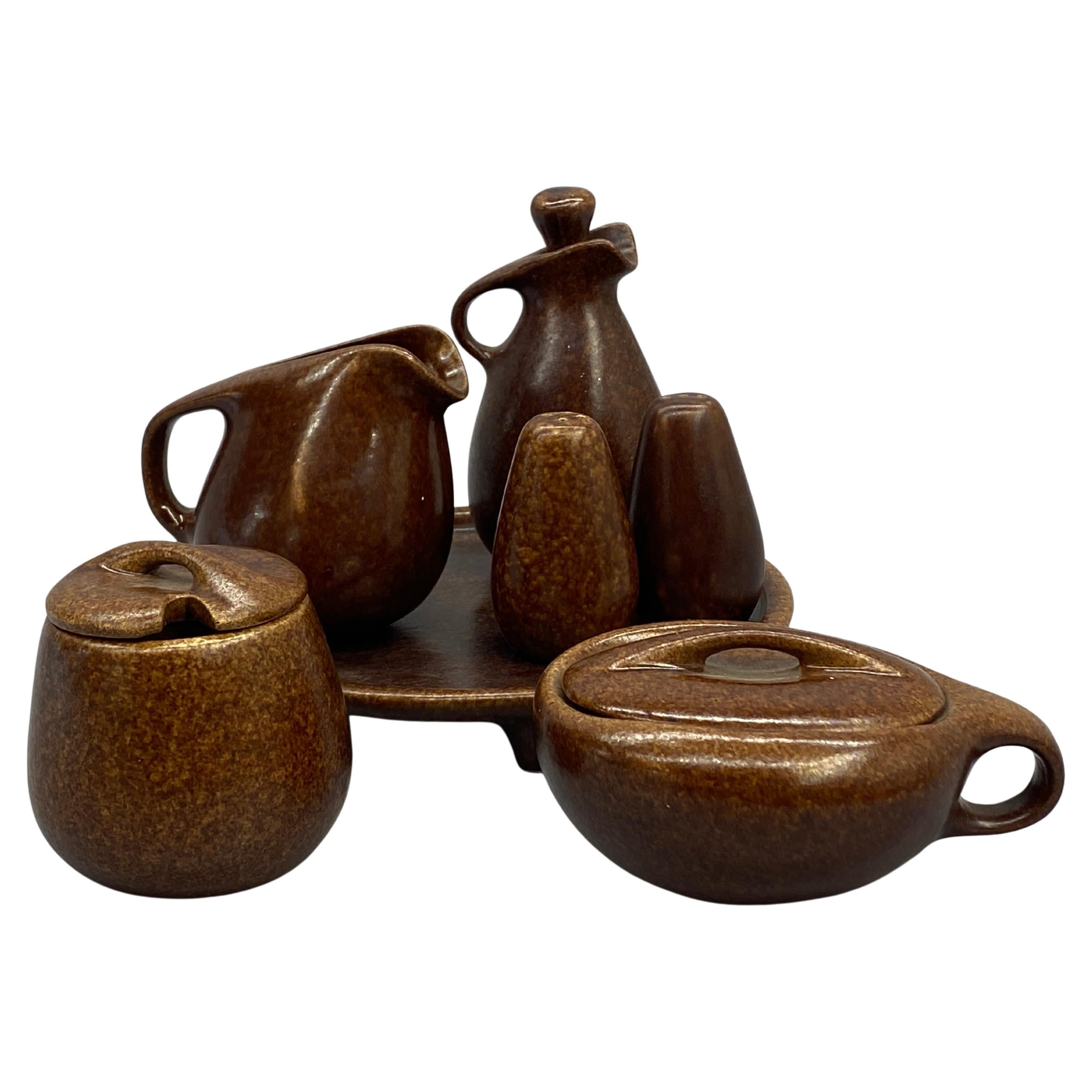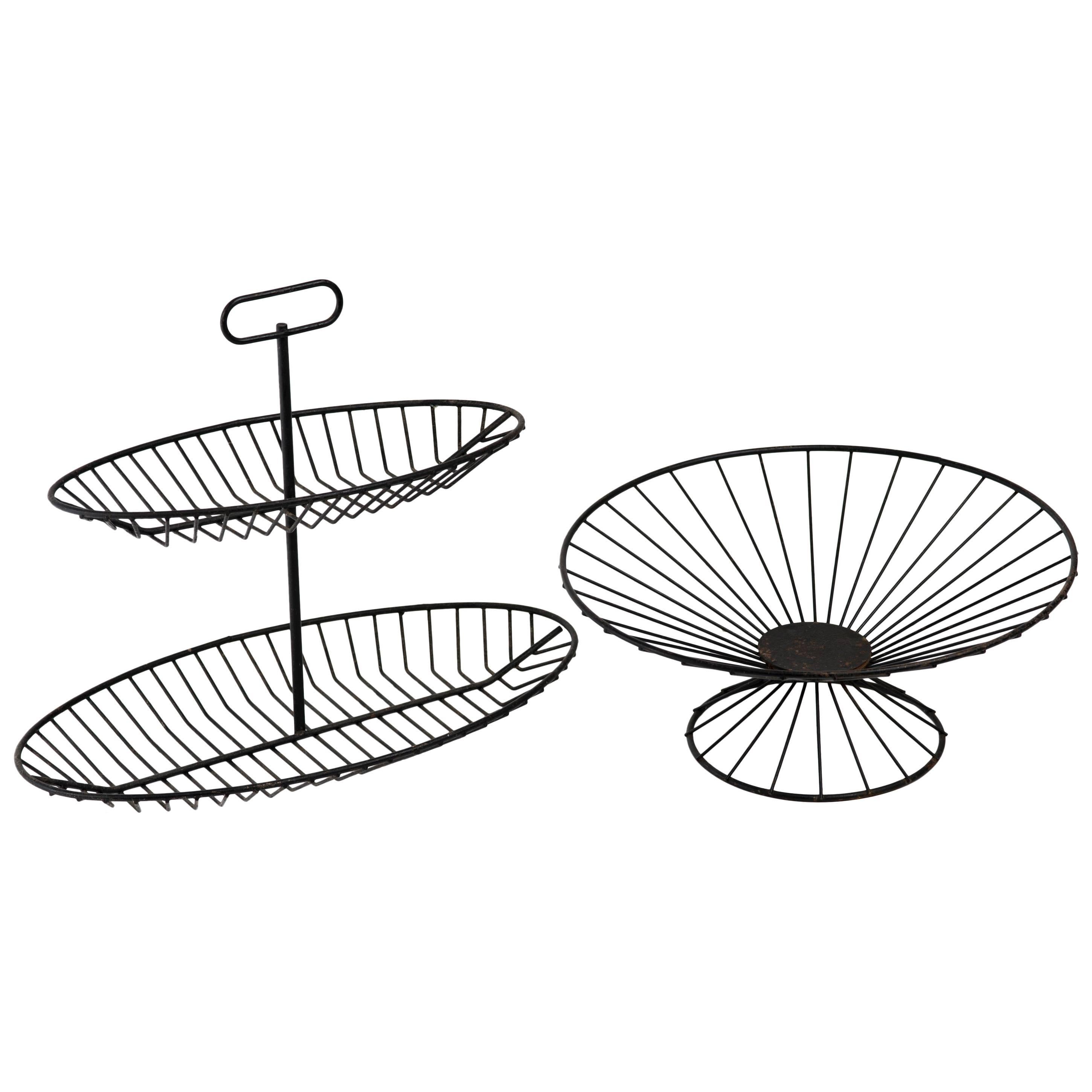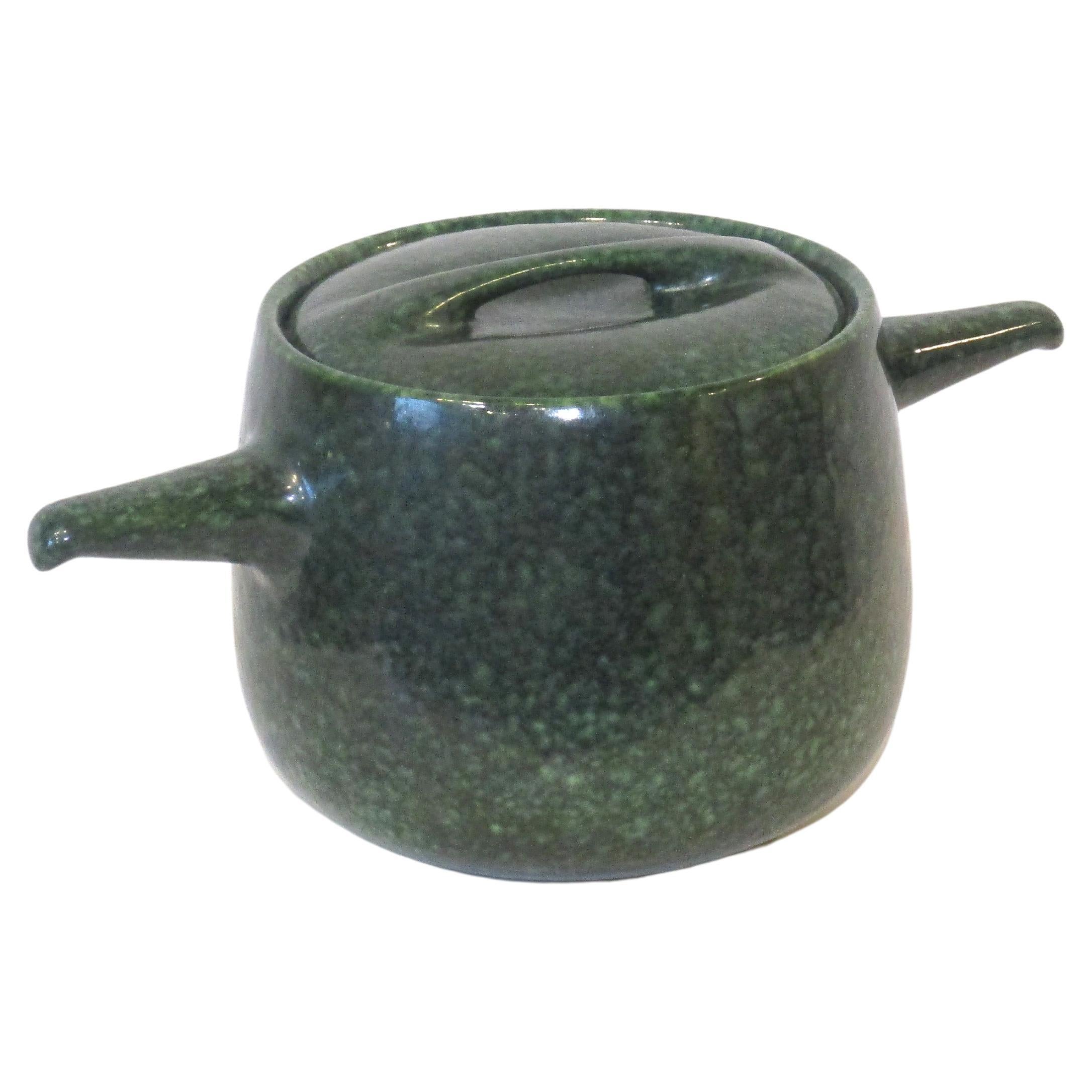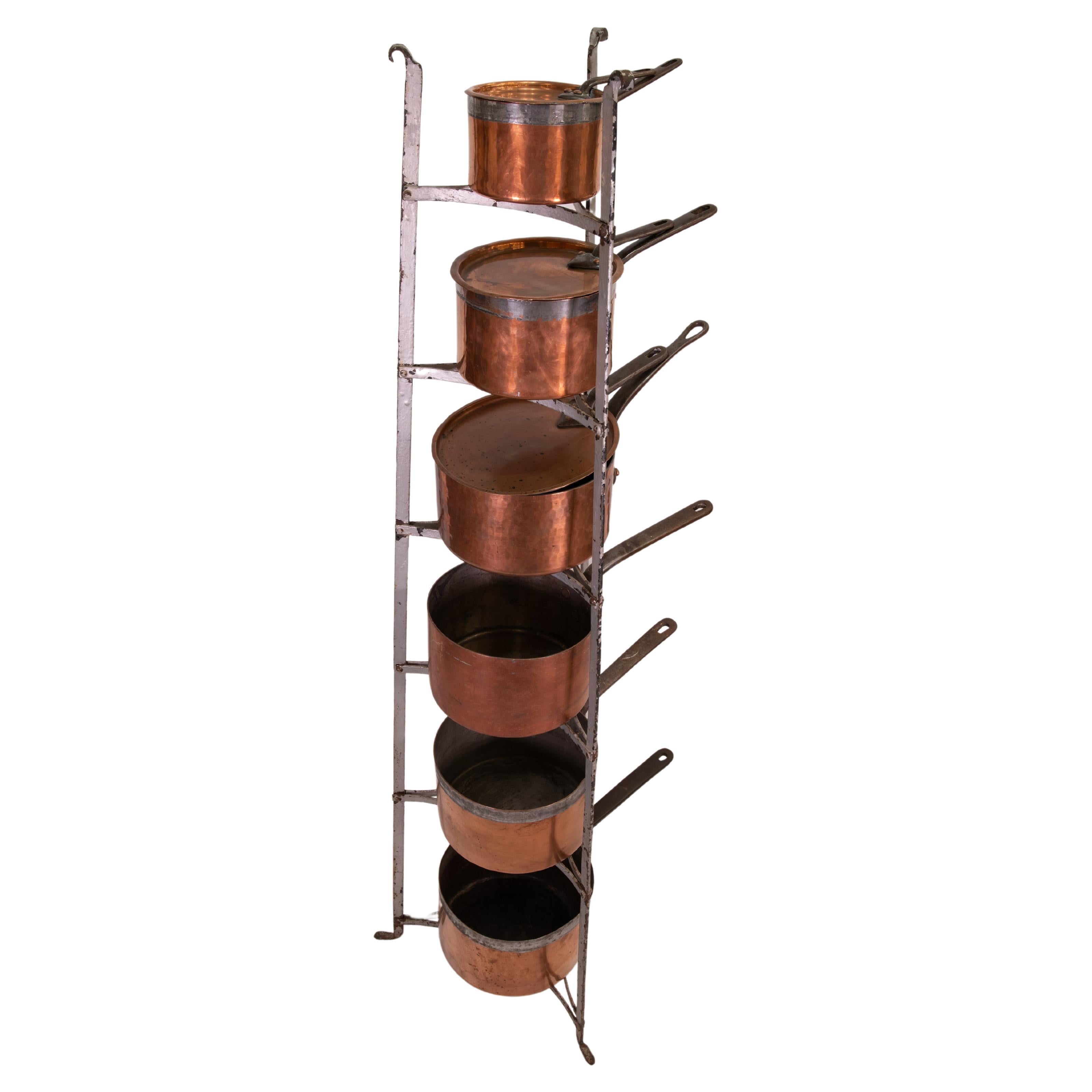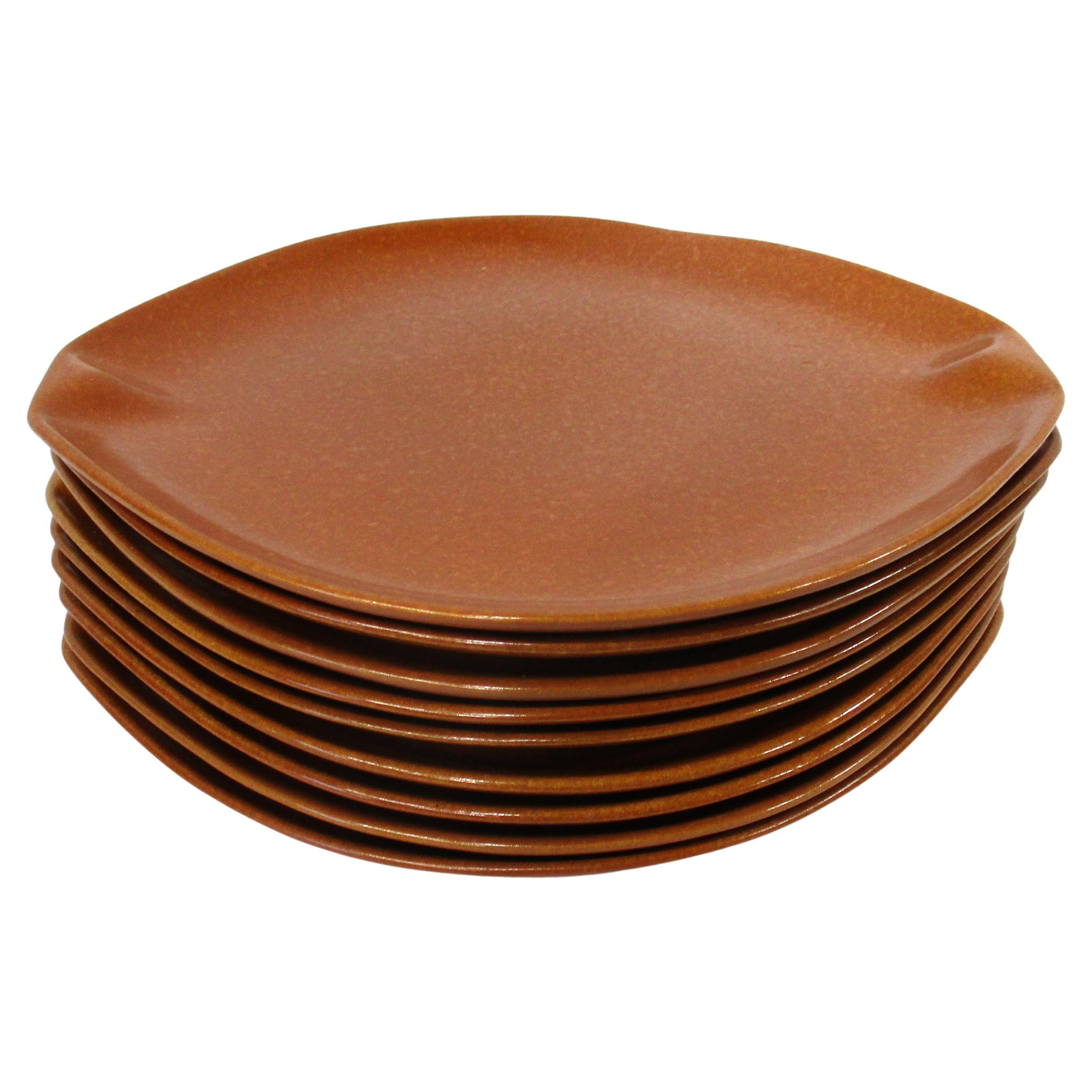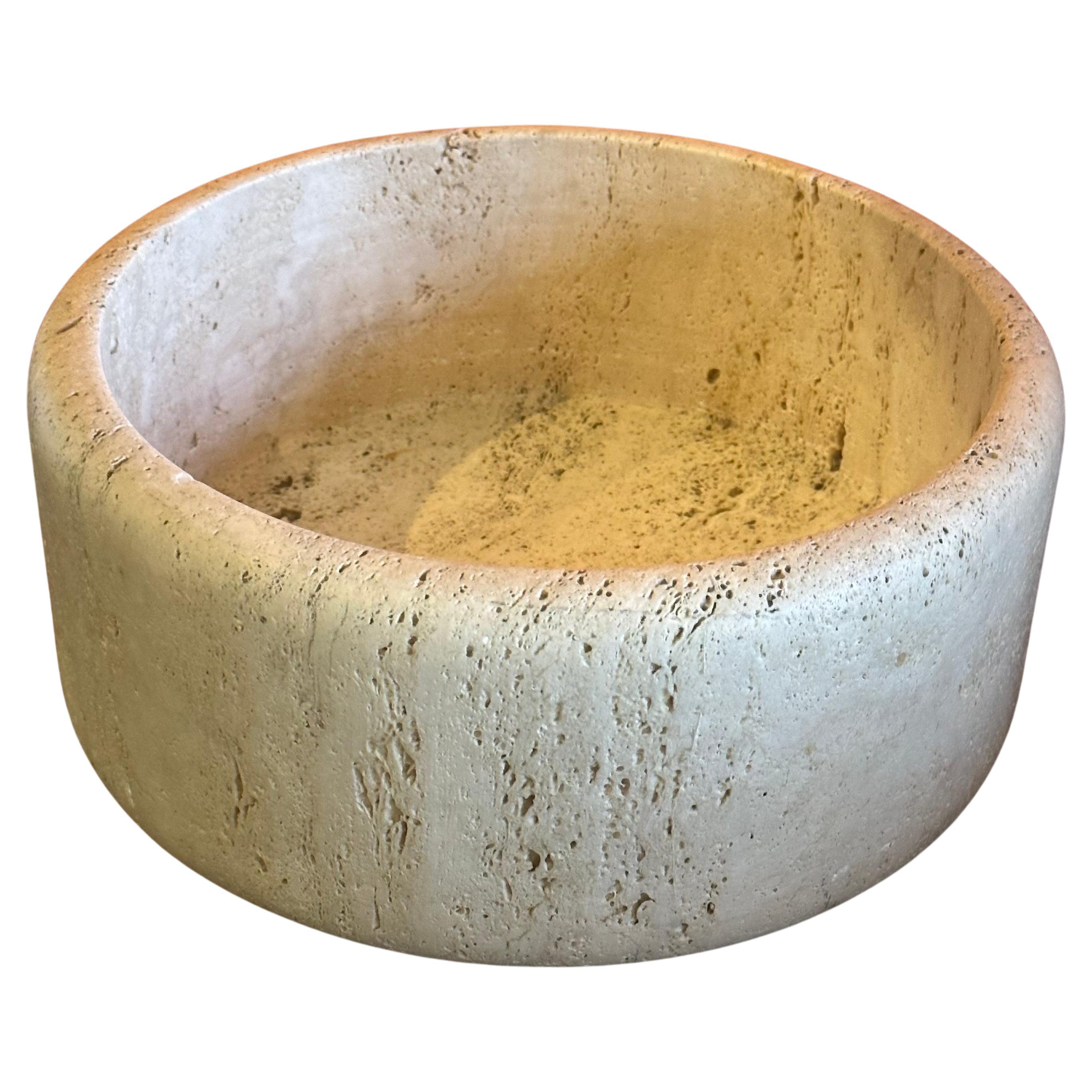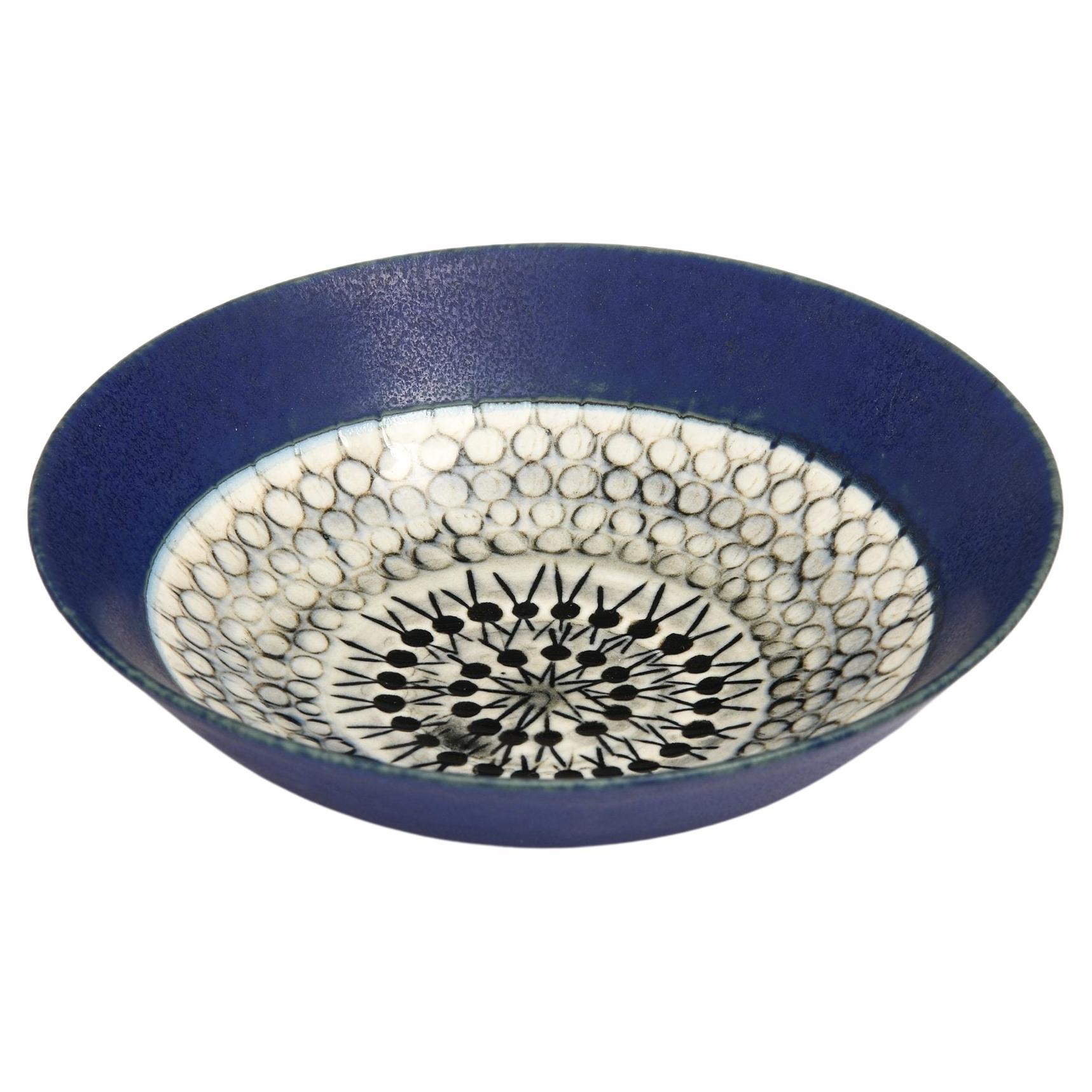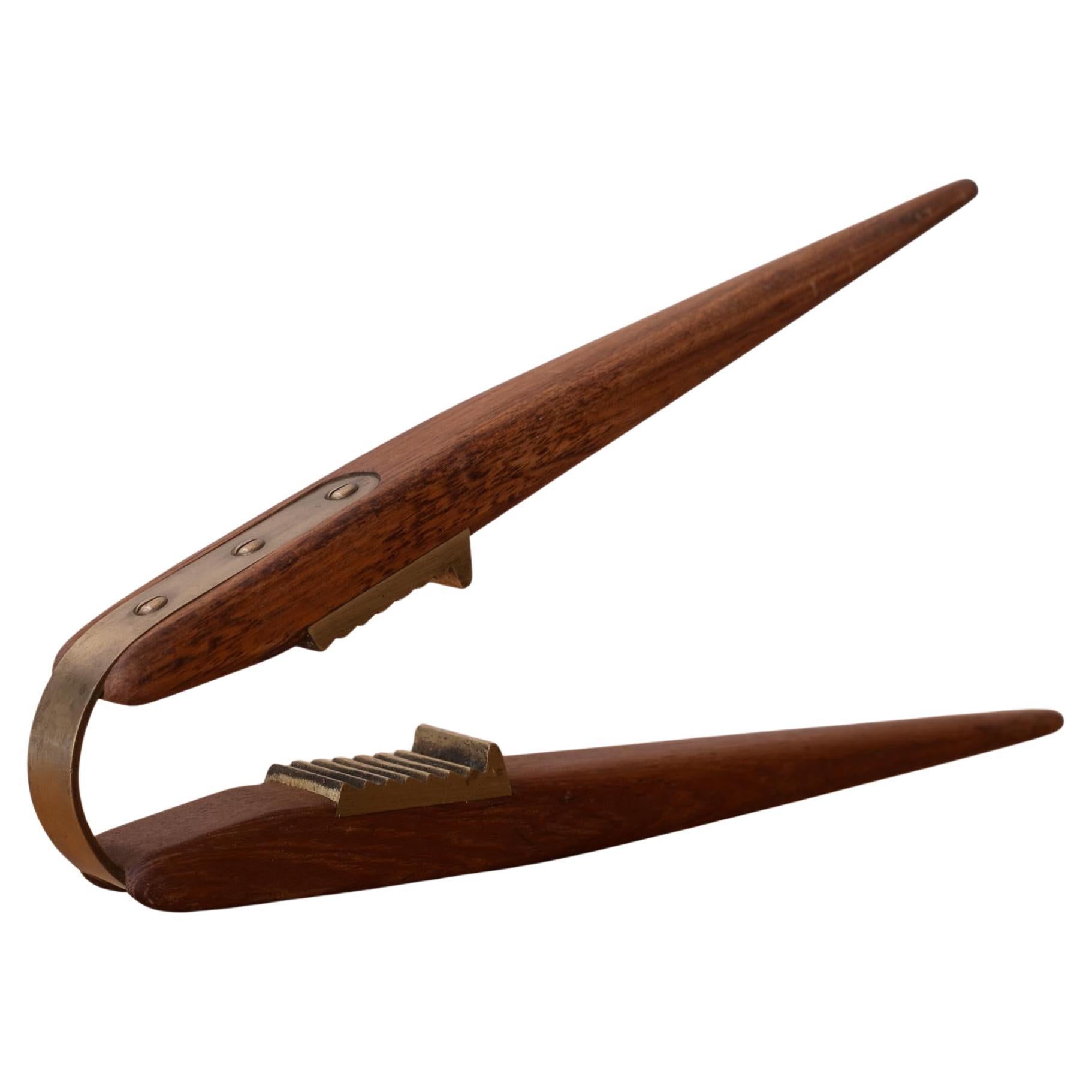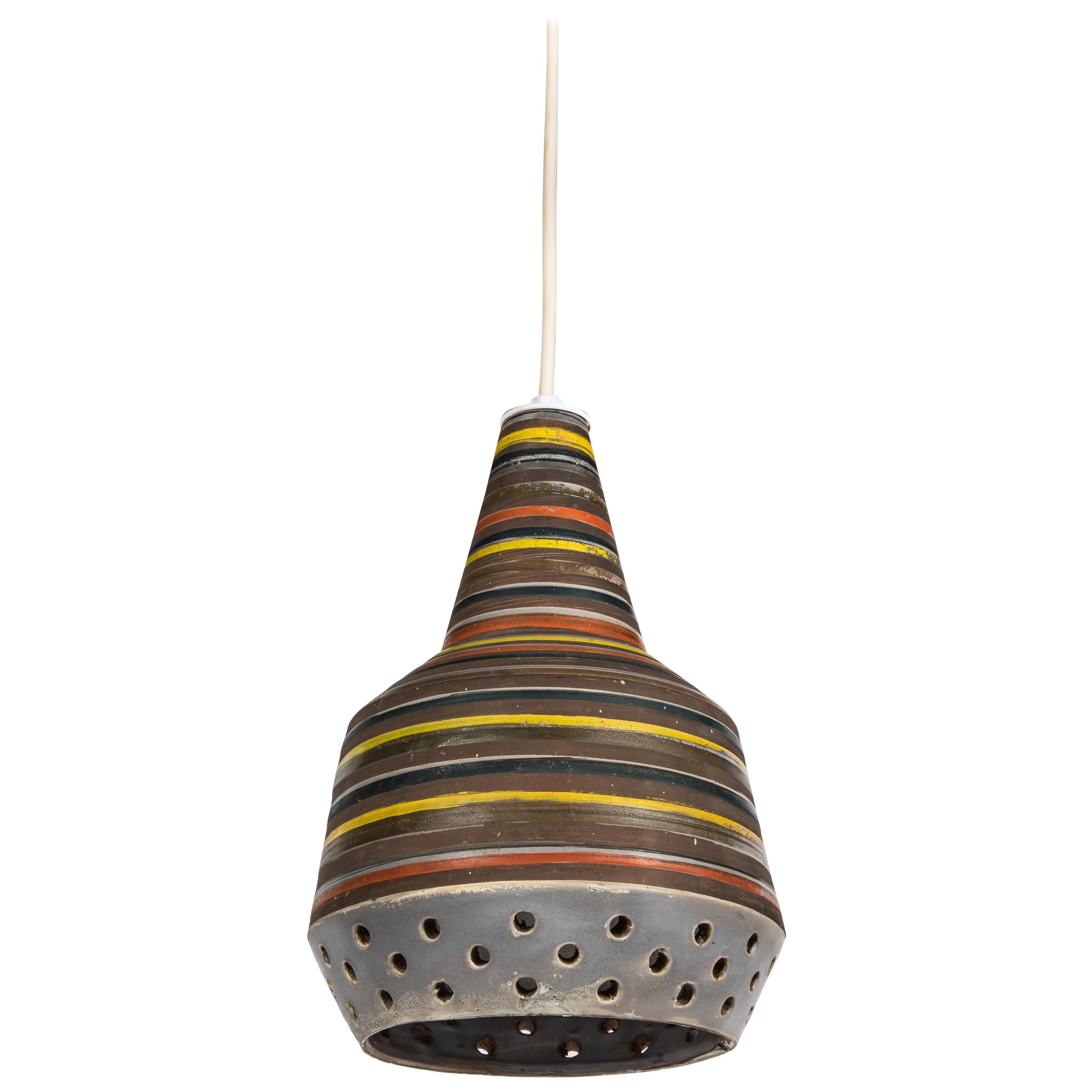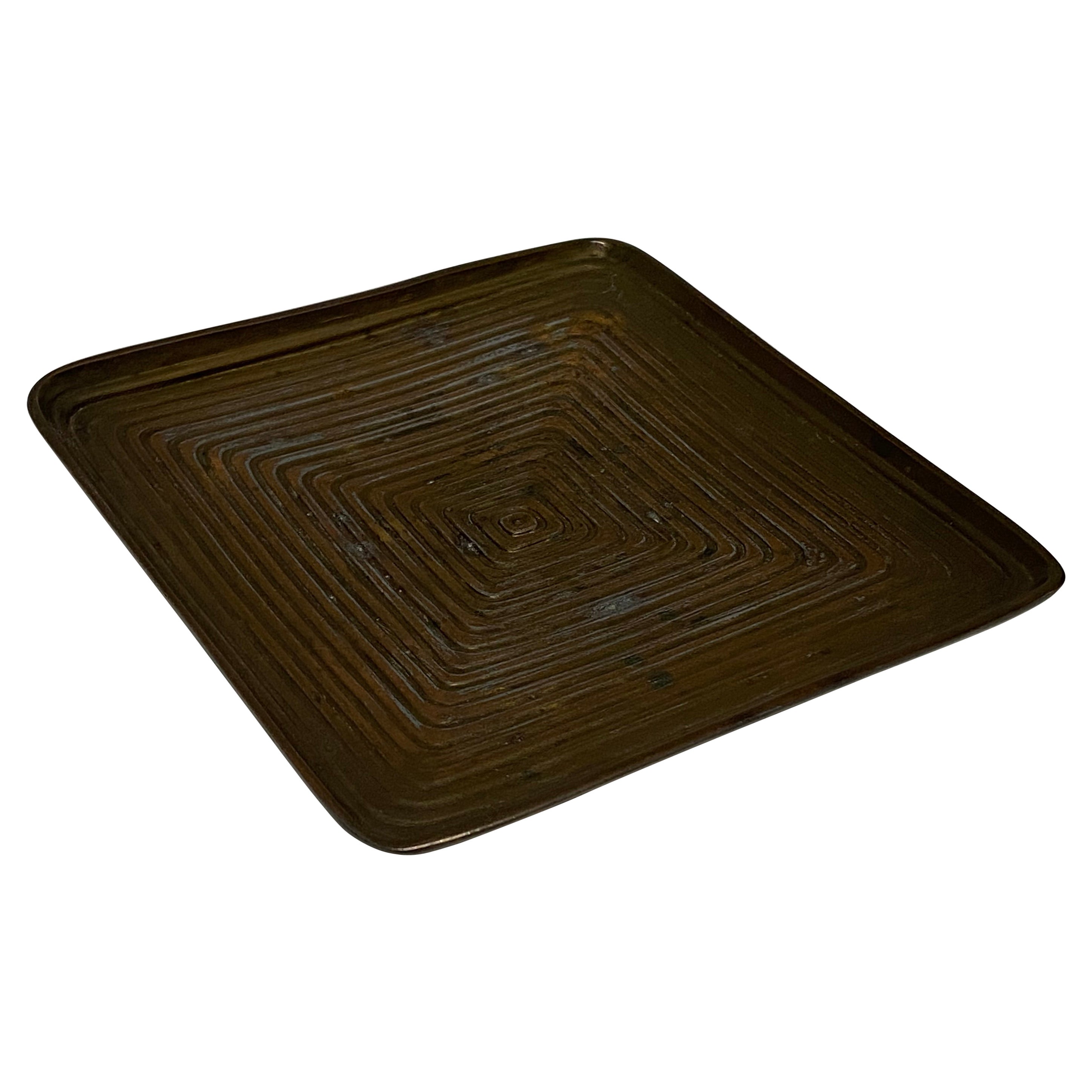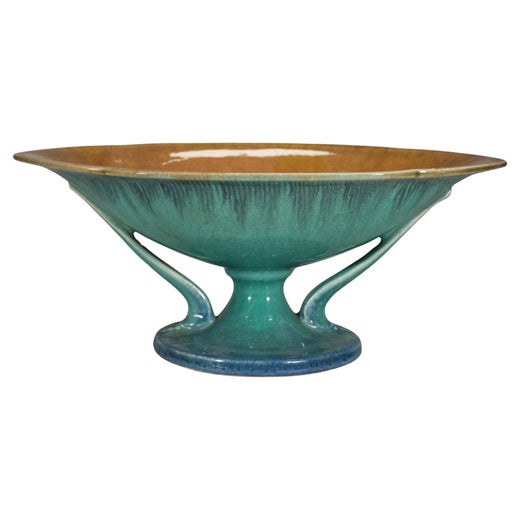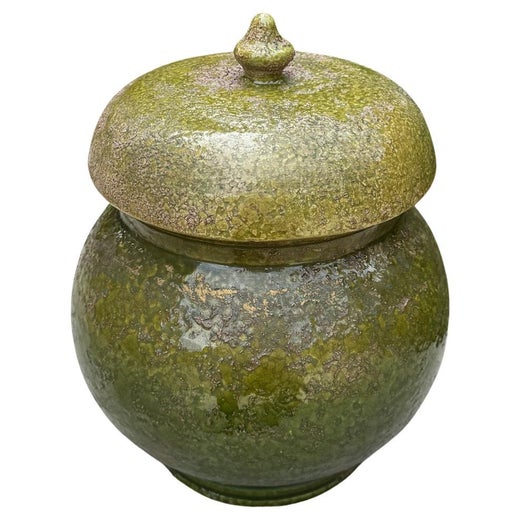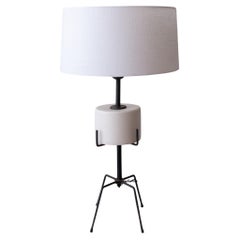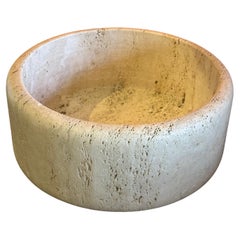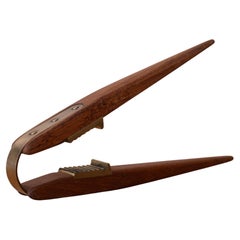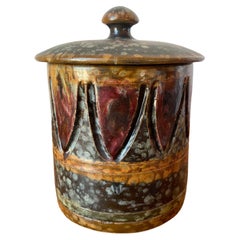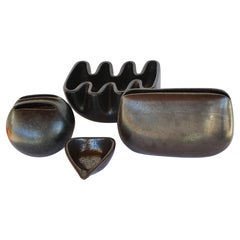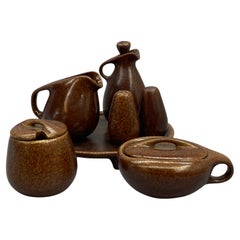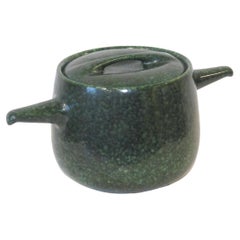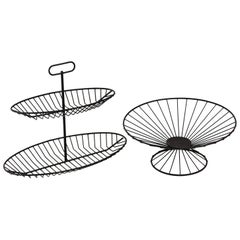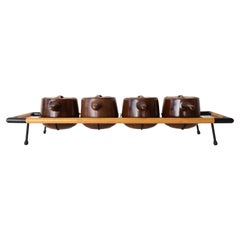
Ceramic and Iron Ben Seibel Raymor Pots and Stand 1950s
View Similar Items
Ceramic and Iron Ben Seibel Raymor Pots and Stand 1950s
About the Item
- Creator:
- Dimensions:Height: 4.5 in (11.43 cm)Width: 24.75 in (62.87 cm)Depth: 8.5 in (21.59 cm)
- Style:Mid-Century Modern (Of the Period)
- Materials and Techniques:
- Place of Origin:
- Period:
- Date of Manufacture:1950s
- Condition:Wear consistent with age and use. Excellent vintage condition.
- Seller Location:San Diego, CA
- Reference Number:1stDibs: LU936638694742
Roseville Pottery
Along with Stickley furniture and the copper lamps of Dirk van Erp, the works of the Roseville Pottery Company are treasured staples of the American Arts and Crafts movement. The straightforward naturalism of vintage Roseville bowls, vases, dishes and other ceramics represent a frank, American aesthetic distinct from the more stylized European Art Nouveau works of the same period. Roseville Pottery works are the essence of honest artisanry.
Founded in Roseville, Ohio, in 1890, the company originally focused on flowerpots, mixing bowls, and other household items, but branched out into art pottery in 1900. An early manifestation of the Arts and Crafts movement in the United States — which celebrated traditional craftsmanship and would influence designers and architects including Frank Lloyd Wright — was Fulper, Rookwood and Roseville pottery. Hand-painted florals and gourd-like shapes were the pieces’ most obvious characteristics.
Roseville pottery typically features decorative motifs inspired by nature — the company’s Pinecone and Blackberry patterns are perennial favorites among collectors — and glazes in warm, earthy shades of brown and gold.
Roseville's Pinecone pattern was the brainchild of art director Frank Ferrell, who sculpted the prototype for each piece by hand. His most successful ideas went into mass production, while others were limited to only a few experimental pieces. These “experimentals” are now the most sought-after Roseville wares — look for the official Roseville pottery marks on the bottom or side of a piece, along with a number or (in some cases) even a note.
As you will see from the items on these pages, Roseville Pottery produced ceramics of timeless and enduring warmth and beauty. They merit a place in every collection of American design.
Find vintage Roseville bowls, vessels and other works for sale on 1stDibs.
Raymor
Few had their finger on the pulse of American furniture like importer and distributor Raymor. Founder Irving Richards first had his eyes opened to the world of furniture while attending the 1928 Salon d’Automne art and design fair in Paris. He joined Lightolier two years later and developed its business relationships, including with designer Russel Wright.
Wright and Richards met in 1935 and Russel Wright, Inc. was formed in 1936. Its American Modern ceramic tableware, produced under the name Wright Accessories in 1938, was a notably lucrative collaboration. Following the early success of American Modern, Richards obtained the majority share of Wright Accessories and changed its name to Raymor Mfg Division Inc. in 1941.
By 1952, the exclusivity over American Modern had ended (the line was initially produced by Wright Associates and later manufactured by Steubenville for two decades). To keep up with American markets, Raymor worked with prominent designers such as George Nelson, Arthur Umanoff, Ray and Charles Eames, and Hans J. Wegner.
The company’s imports expanded to Denmark, which contributed to the rise of Scandinavian modern designs in the American market. Throughout the 1950s, Richards established relationships with factories in Scandinavia, Italy and Germany, as well as with the influential tastemaker and importer Charles Stendig.
The furniture company Simmons bought Raymor in 1963 and changed its name to Raymor Richards, Morgenthau Inc. in 1969. During that time, Raymor’s Omnibus range of Scandinavian-style wall units became widely popular, along with Italian glass and pottery like Bitossi ceramics designed by Aldo Londi and Bagni ceramics by Alvino Bagni.
Shifting styles coupled with rising competition, and the departure of Richards from the company, ended Raymor. By the late 1970s, Raymor faced a wave of international factories able to produce similar products of lesser quality for a lower cost. Buyers were eager to frequently change their interior styles, limiting the need for high-end, durable furniture, which Raymor had been importing.
On 1stDibs, find a collection of vintage Raymor ceramics, lamps, decorative objects and more.
More From This Seller
View AllVintage 1950s American Mid-Century Modern Table Lamps
Metal
Mid-20th Century Italian Mid-Century Modern Serving Bowls
Travertine
Mid-20th Century Danish Mid-Century Modern Serving Bowls
Brass
20th Century Italian Mid-Century Modern Jars
Ceramic
Vintage 1950s Italian Mid-Century Modern Ashtrays
Ceramic
20th Century Italian Mid-Century Modern Jars
Ceramic
You May Also Like
Vintage 1950s American Mid-Century Modern Ceramics
Ceramic
Vintage 1950s American Mid-Century Modern Ceramics
Ceramic
Mid-20th Century American Mid-Century Modern Soup Tureens
Pottery
Mid-20th Century American Mid-Century Modern Centerpieces
Metal
Antique 1880s English Serving Bowls
Copper
Mid-20th Century American Mid-Century Modern Dinner Plates
Pottery
